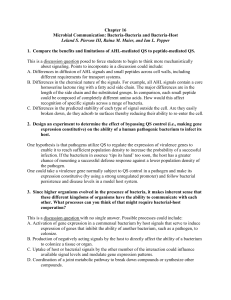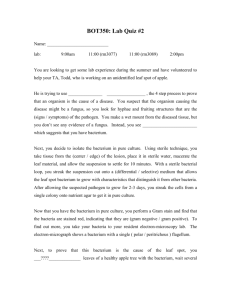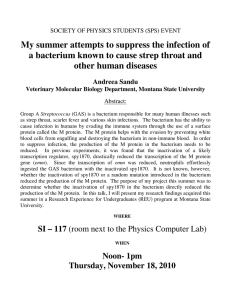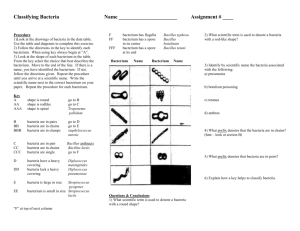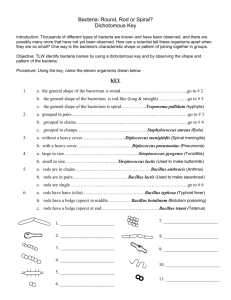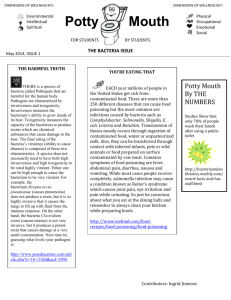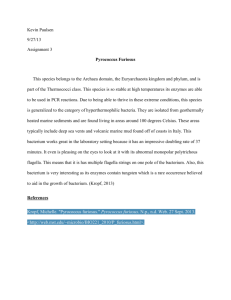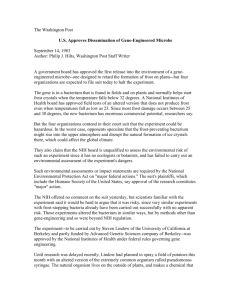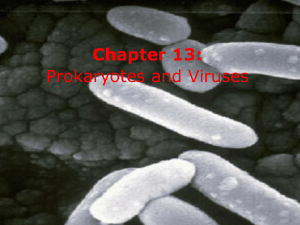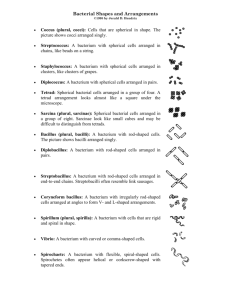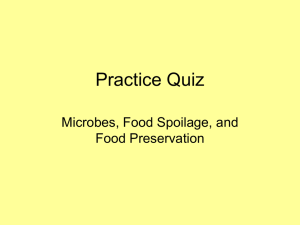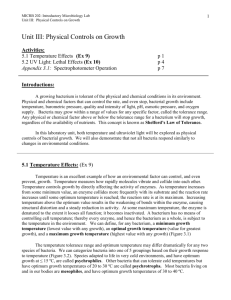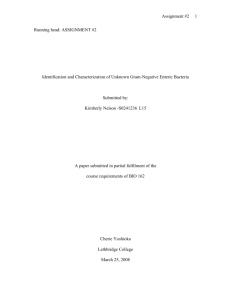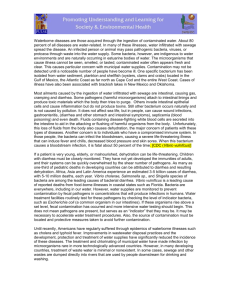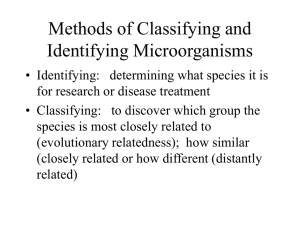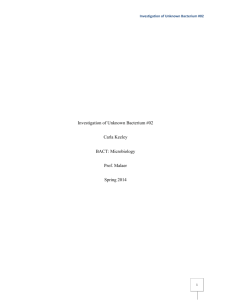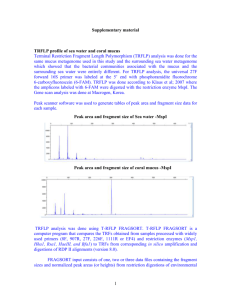Shapes of Bacteria
advertisement
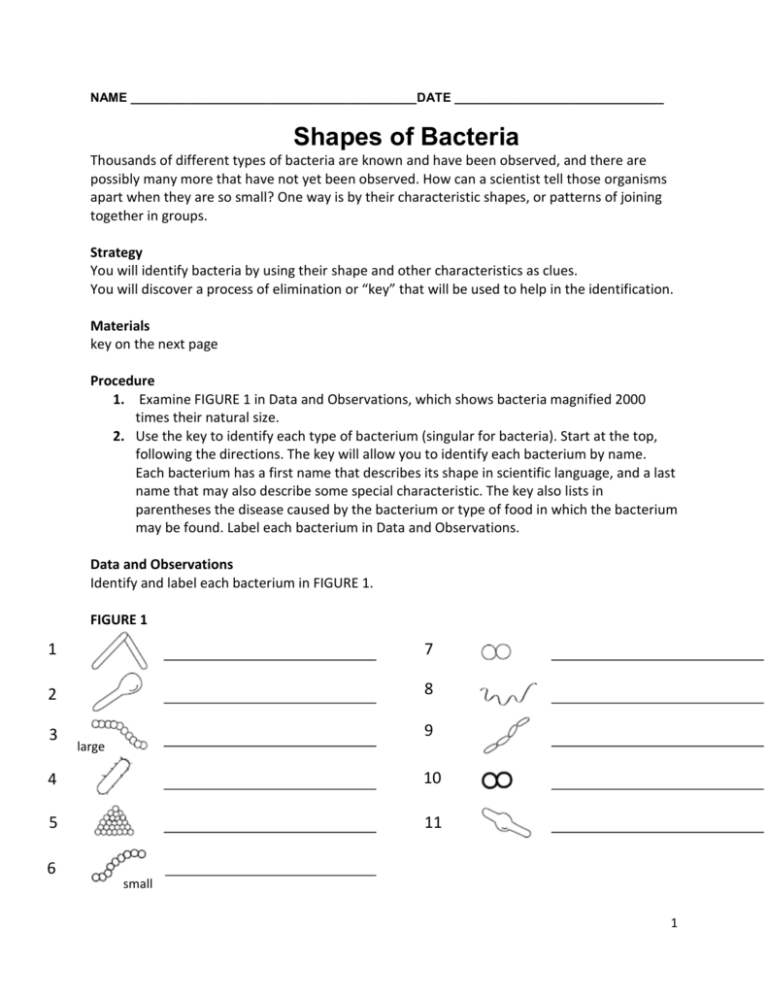
NAME _________________________________________DATE ______________________________ Chapter 16 Shapes of Bacteria Thousands of different types of bacteria are known and have been observed, and there are possibly many more that have not yet been observed. How can a scientist tell those organisms apart when they are so small? One way is by their characteristic shapes, or patterns of joining together in groups. Strategy You will identify bacteria by using their shape and other characteristics as clues. You will discover a process of elimination or “key” that will be used to help in the identification. Materials key on the next page Procedure 1. Examine FIGURE 1 in Data and Observations, which shows bacteria magnified 2000 times their natural size. 2. Use the key to identify each type of bacterium (singular for bacteria). Start at the top, following the directions. The key will allow you to identify each bacterium by name. Each bacterium has a first name that describes its shape in scientific language, and a last name that may also describe some special characteristic. The key also lists in parentheses the disease caused by the bacterium or type of food in which the bacterium may be found. Label each bacterium in Data and Observations. Data and Observations Identify and label each bacterium in FIGURE 1. FIGURE 1 1 7 2 8 3 9 large 4 10 5 11 6 small 1 KEY If the general shape of a bacterium is round, go to I, skip II and III. If the general shape of a bacterium is rod (long and straight), go to II, skip I and III. If the general shape of a bacterium is spiral, go to III, skip II and I. Section I If in pairs, go to a or a’ only. If in chains, go to b or b’ only. If in clumps, go to c only. a—without a heavy cover-Diplococcus meningitidis (spinal meningitis) a’—with a heavy cover (capsule)-Diplococcus pneumoniae (Pneumonia) b—large in size-Streptococcus pyogenes (Tonsillitis) b’—small in size-Streptococcus lactis-(Buttermilk) c—Staphylococcus aureus (Boils) Section II If in chains, go to d only. If in pairs, go to e only. If single, go to f or f’ or f”. d—Bacillus anthracis (Anthrax) e—Bacillus lactis (Sauerkraut) f—with hairs (flagella)-Bacillus typhosa (Typhoid fever) f’—with a bulge (spore) in the middle-Bacillus botulinum (Botulism poisoning) f”—with a bulge at the end-Bacillus tetani (Tetanus) Section III Treponema palladium (Syphilis) Questions and Conclusions 1. What part of the word is the same for all bacteria found in Section I?____________________ This word refers to the shape of a bacterium. The shape is _____________________________ 2. The word “diplo-” when placed in front of a bacterium name must mean_________________ 3. The word “strepto-” when placed in front of a bacterium name must mean ______________ 4. The word “staphylo-” when placed in front of a bacterium name must mean _____________ 5. What word is the same for all bacteria found in Section II? ____________________________ This word refers to the shape of a bacterium. The shape is _____________________________ 6. Some bacteria produce chemicals that provide food with a certain taste. Name two such foods. ________________________________________________________________________ Strategy Check _____ Can you use the key to identify bacteria by their shape and other characteristics? _____ Can you understand how the use of scientific names helps to describe features of bacteria? 2
